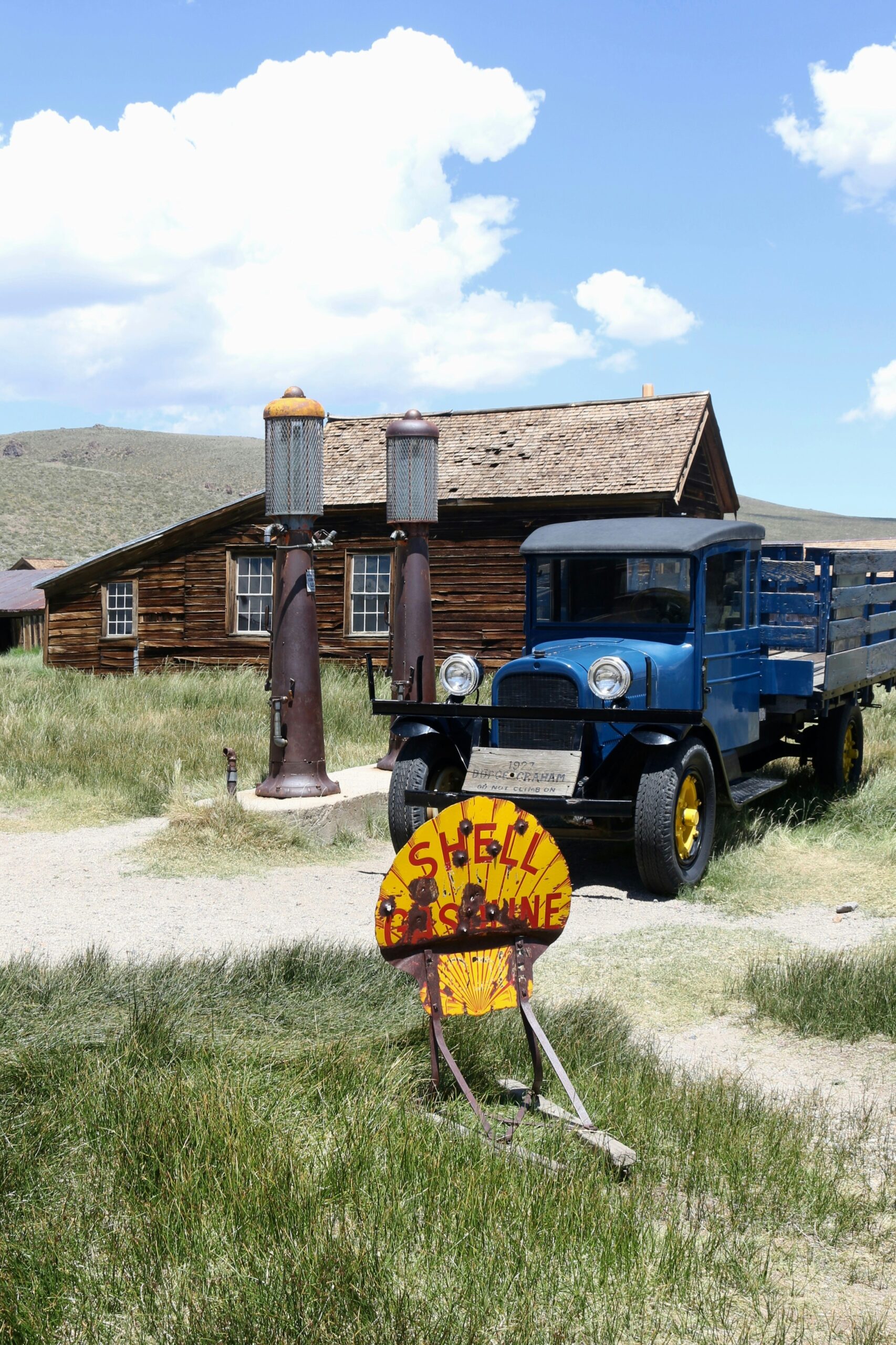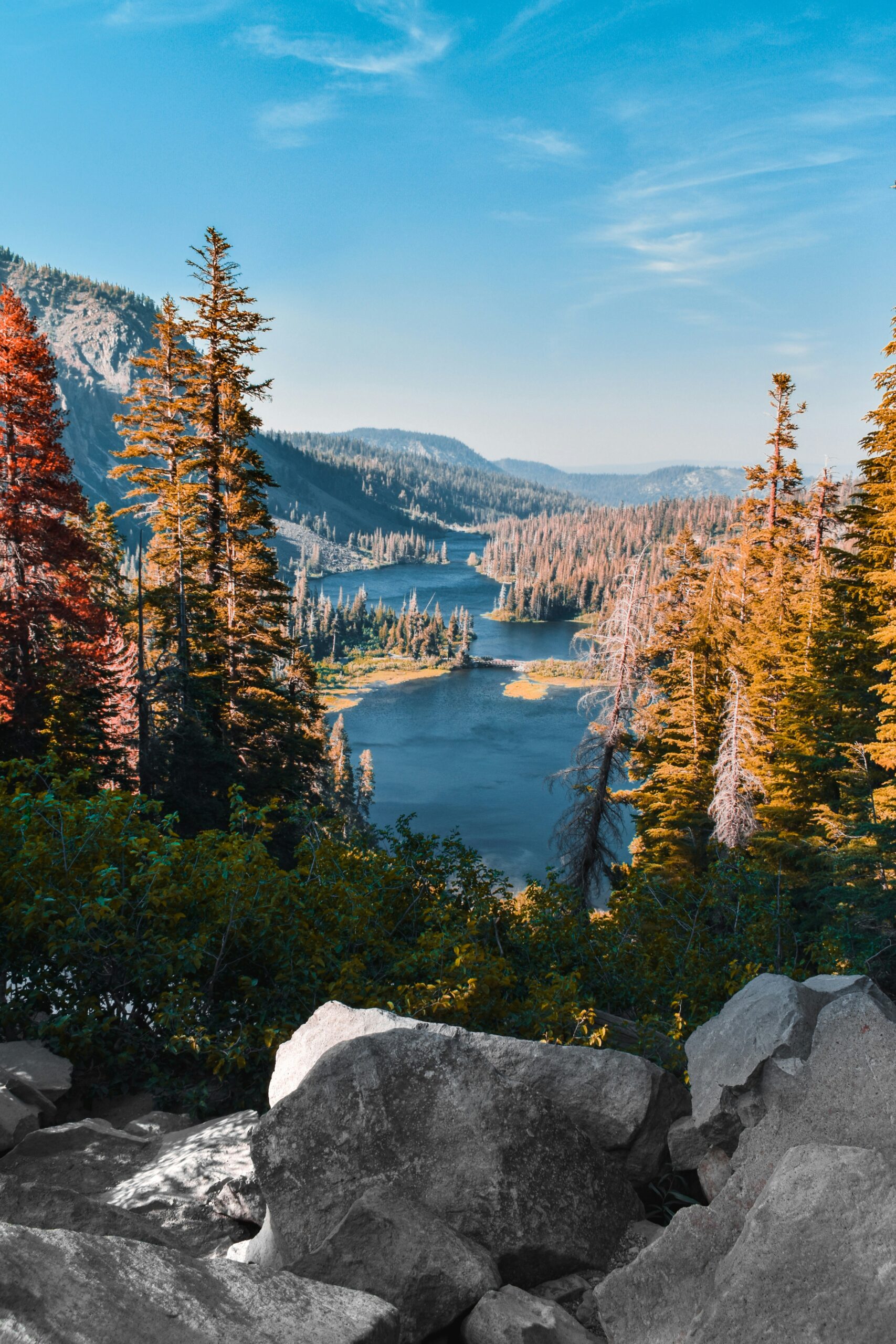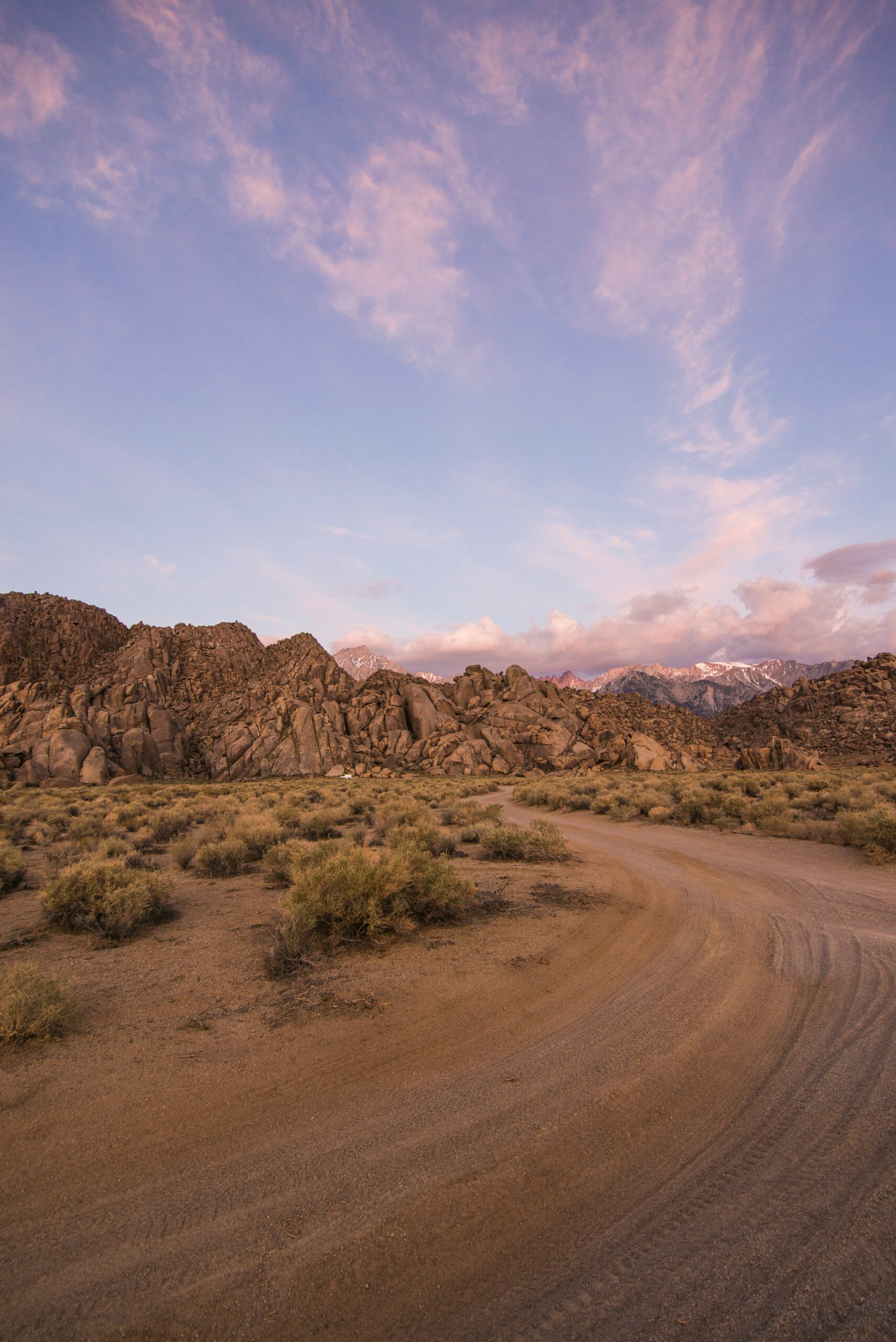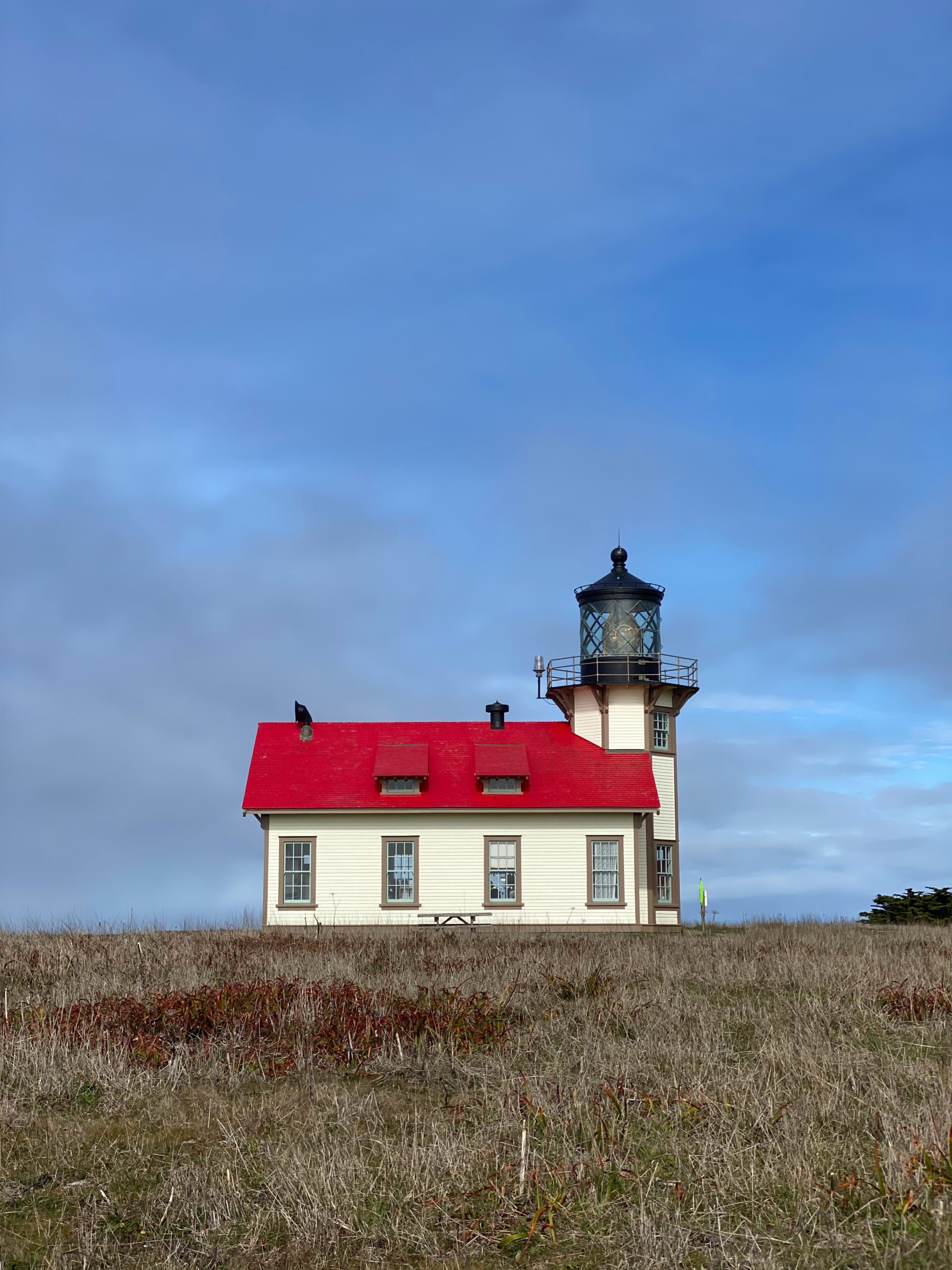Ghost Towns in California: Exploring Abandoned Communities
If you're looking for a unique travel experience in California, consider visiting one of the state's many ghost towns. These abandoned settlements are scattered throughout the state and offer a glimpse into California's rich history. Whether you're a history buff or just looking for an off-the-beaten-path adventure, exploring ghost towns in California is sure to be a memorable experience.
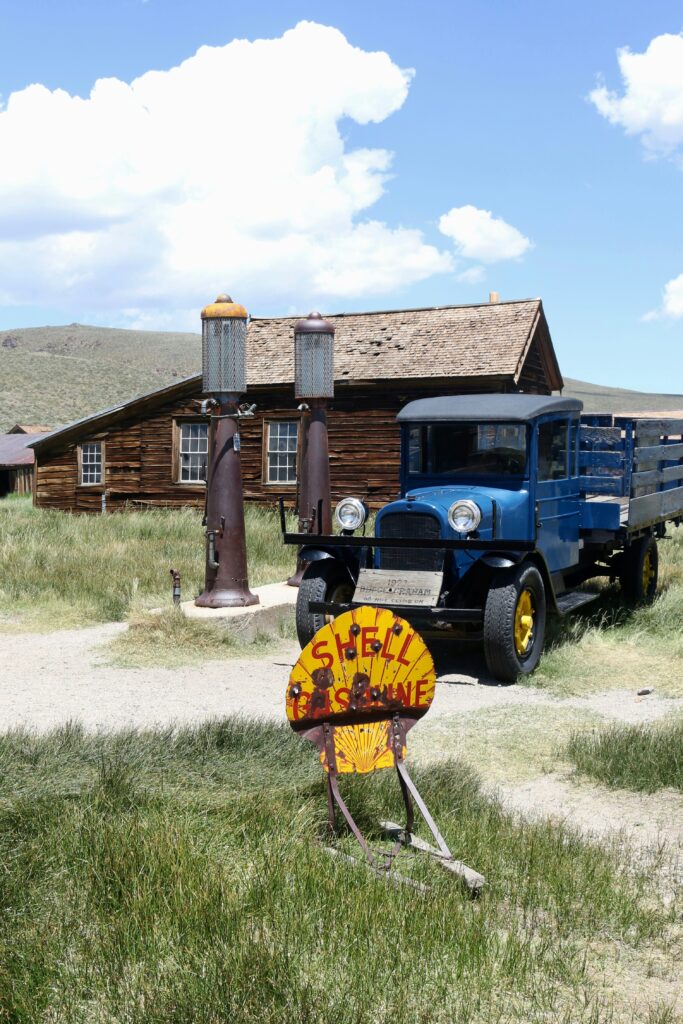
One of the most well-known ghost towns in California is Bodie. Located in the eastern Sierra Nevada mountains, Bodie was a bustling gold-mining town in the late 1800s. Today, it's a state historic park and one of the best-preserved ghost towns in the country. Visitors can explore the town's many abandoned buildings and learn about life in the Wild West.
But Bodie isn't the only ghost town worth visiting in California. From Calico in the Mojave Desert to Cerro Gordo in the Inyo Mountains, there are plenty of other abandoned towns waiting to be explored. Each one has its own unique history and charm, making ghost town tourism a fascinating way to experience California's past.
Ghost Towns in California: Exploring Abandoned Communities
History of Ghost Towns
California's history is rich with tales of gold rushes, silver strikes, and hydraulic mining. These industries attracted thousands of people to the state in search of fortune, leading to the establishment of many towns that boomed and eventually went bust. Today, these abandoned towns, known as “ghost towns,” serve as a reminder of California's past.
Gold Rush and Mining
The California Gold Rush of 1848-1855 brought an influx of people to the state, with miners seeking to strike it rich. Many of the towns that sprouted up during this time were centered around gold mining, with some of the most famous including Bodie, Columbia, and Grass Valley. These towns were often bustling with activity, with saloons, hotels, and shops catering to the miners' needs.
Silver Mining Heritage
In the late 1800s, silver mining became a significant industry in California. Towns such as Cerro Gordo and Calico sprung up around these mines, attracting prospectors and their families. These towns were often larger and more established than their gold rush counterparts, with schools, churches, and other amenities.
Decline and Preservation
As the mining industries declined, many of these towns were abandoned, leaving behind empty buildings and a sense of desolation. However, some of these towns have been preserved as historical sites, giving visitors a glimpse into California's past. Bodie, for example, is now a State Historic Park, offering tours and exhibits that showcase life in a gold rush town.
In conclusion, California's ghost towns are a testament to the state's rich history of mining and gold rushes. While many of these towns are now abandoned, they serve as a reminder of the boom-and-bust cycles that shaped California's past.
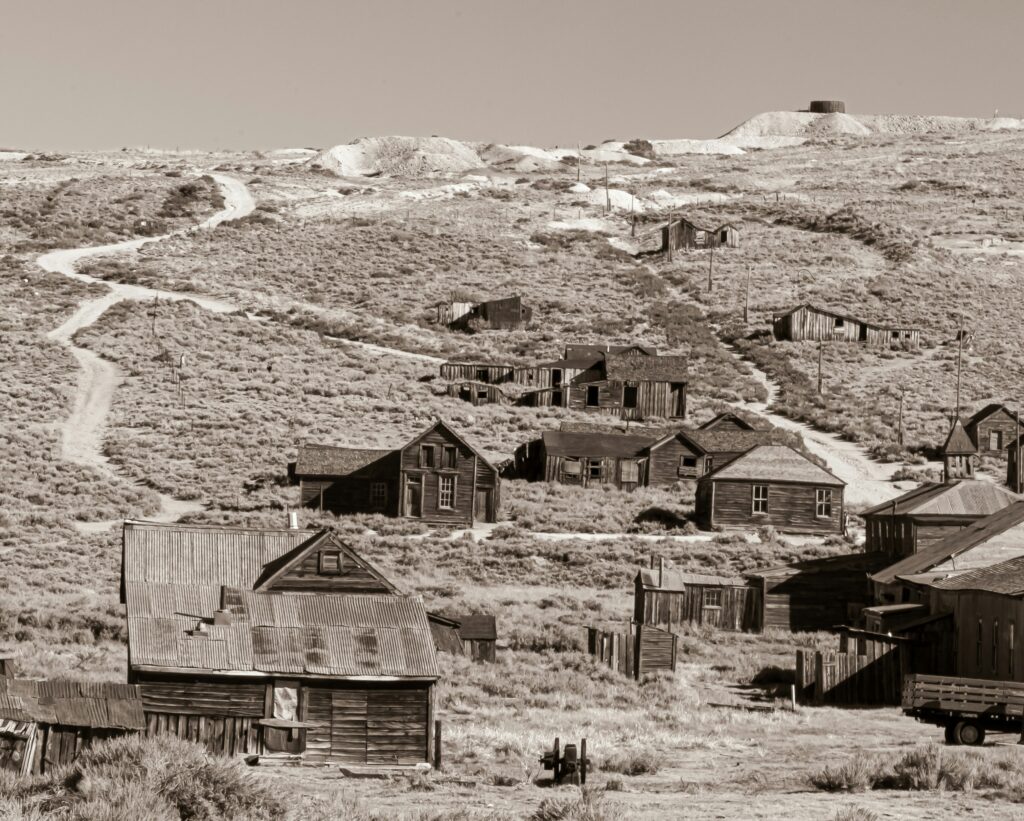
Related Posts:
- California Gold Mine: A Historical and Economic Overview
- Family Friendly Gold Mining in California: A Fun and Safe Adventure for All Ages
Famous Ghost Towns
California has a rich history of mining towns that have been abandoned over time, leaving behind a trail of ghost towns. These towns are now popular tourist attractions, offering a glimpse into the past and the life of the people who lived there. Here are some of the most famous ghost towns in California.
Bodie: A Town Frozen in Time
One of the most famous ghost towns in California, Bodie is a well-preserved example of a 19th-century mining town. Located in the Bodie Hills east of the Sierra Nevada mountain range, Bodie was once a bustling town with a population of over 10,000 people. Today, it is a State Historic Park and a popular tourist attraction.
Bodie offers a unique glimpse into the past, with many buildings and artifacts still intact. You can explore the town's saloons, general stores, and even the jail. The park also offers guided tours and events throughout the year, including a popular annual ghost walk.
Related Post:
The Riches of Cerro Gordo
Cerro Gordo is another famous ghost town in California, located in the Inyo Mountains. It was once a prosperous silver mining town, producing over $17 million worth of silver in its heyday. Today, the town is a popular tourist attraction, offering a glimpse into the past and the life of the people who lived there.
Visitors to Cerro Gordo can explore the town's many buildings, including the hotel, saloon, and general store. The town also offers guided tours and events throughout the year, including a popular annual ghost hunt.
Calico's Colorful History
Calico is a former mining town located in the Mojave Desert. It was once a bustling town with a population of over 1,200 people. Today, it is a State Historic Landmark and a popular tourist attraction.
Calico offers a unique glimpse into the past, with many buildings and artifacts still intact. You can explore the town's many shops, restaurants, and museums. The town also offers guided tours and events throughout the year, including a popular annual ghost walk.
In conclusion, these famous ghost towns in California offer a unique glimpse into the past and the life of the people who lived there. Whether you're interested in history, architecture, or just looking for a fun and unique day trip, these ghost towns are definitely worth a visit.
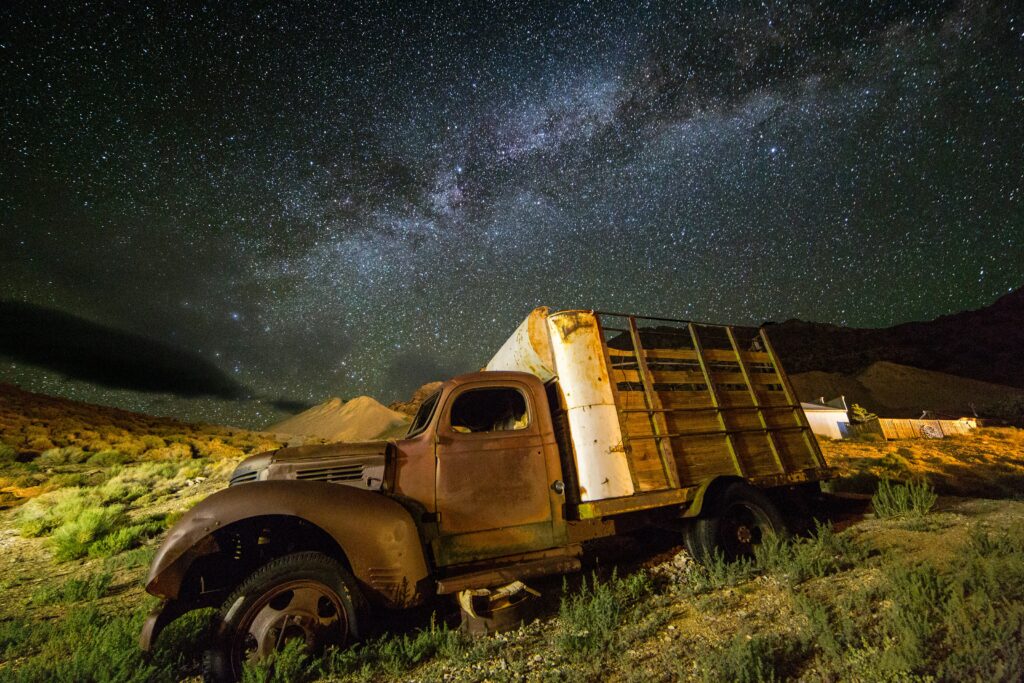
Cultural Impact
Chinese Influence in Mining Towns
California's gold rush era brought a significant number of Chinese immigrants to the state, particularly to mining towns such as Chinese Camp. These immigrants played an essential role in the development of California's economy. They established businesses, worked in mines, and built railroads.
Despite their contributions, Chinese immigrants faced discrimination and violence. The Chinese Exclusion Act of 1882 prohibited Chinese immigrants from entering the United States, and many Chinese immigrants were forced to leave California. However, their influence can still be seen in California's culture, particularly in the cuisine.
African American History
African Americans also played a significant role in California's development, particularly during the gold rush. Many African Americans came to California in search of gold and settled in towns such as Coloma and Auburn. However, they faced discrimination and segregation, and many were forced to work in low-paying jobs.
During World War II, African Americans were also affected by the internment camps. Many were forced to leave their homes and businesses and were sent to internment camps such as Manzanar. Today, the Manzanar National Historic Site serves as a reminder of this dark period in American history.
Despite the challenges faced by African Americans in California, they have made significant contributions to the state's culture and society. Colonel Allensworth State Historic Park, for example, is a testament to the resilience and determination of African American pioneers who founded the town of Allensworth in 1908.
Geographical Distribution
California is home to many ghost towns, each with its own unique history and character. These abandoned towns are scattered throughout the state, from the northernmost reaches to the southernmost deserts. In this section, we'll take a look at the geographical distribution of California's ghost towns and explore some of the forgotten places that dot the state.
Northern California's Forgotten Places
Northern California is home to a number of ghost towns, many of which were abandoned during the gold rush of the mid-1800s. Some of the most notable ghost towns in this region include Bodie, a well-preserved mining town that is now a state park, and Greenville, a former gold mining town that was destroyed by a devastating fire in 2018.
Other notable ghost towns in Northern California include Downieville, a former gold rush town that is now a popular destination for outdoor enthusiasts, and Lassen City, a former logging town that was abandoned in the early 1900s.
Southern California's Deserted Towns
Southern California is home to a number of ghost towns as well, many of which are located in the Mojave Desert. Some of the most notable ghost towns in this region include Calico, a former silver mining town that is now a county park, and Rhyolite, a former gold rush town that was abandoned in the early 1900s.
Other notable ghost towns in Southern California include Ballarat, a former mining town that was abandoned in the 1900s, and Darwin, a former mining town that was abandoned in the 1970s.
Whether you're exploring the abandoned towns of Northern California or the deserted towns of Southern California, you're sure to find plenty of interesting history and unique character in California's ghost towns.
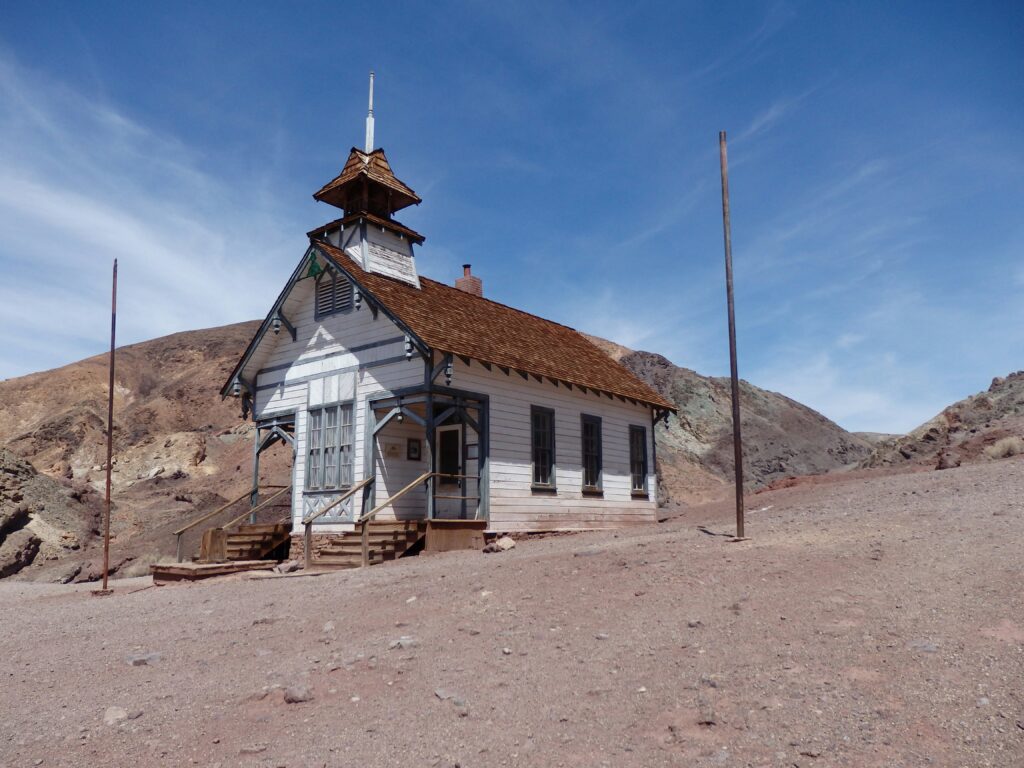
State Parks and Protection
California is home to several well-preserved ghost towns that are protected as State Historic Parks. These parks offer visitors a glimpse into the past and a chance to experience the history of California's gold rush era.
Bodie State Historic Park
Bodie State Historic Park is one of the best-preserved ghost towns in California. Located in the Eastern Sierra, Bodie was a bustling mining town in the late 1800s, with a population of around 8,000 people. Today, visitors can walk down the deserted streets of Bodie and explore the town's many well-preserved buildings.
Bodie State Historic Park is also home to a museum, which features exhibits on the town's history and the lives of the people who lived there. The museum is open year-round, and admission is free.
Malakoff Diggins and Empire Mine
Malakoff Diggins State Historic Park and Empire Mine State Historic Park are two other parks in California that offer visitors a chance to experience the state's gold rush history.
Malakoff Diggins is located in the Sierra Nevada foothills and was once home to one of the largest hydraulic mining operations in the world. Today, visitors can explore the park's many trails and learn about the history of hydraulic mining in California.
Empire Mine State Historic Park is located in Grass Valley and was once one of the richest gold mines in California. Today, visitors can tour the mine and explore the park's many exhibits on the history of the mine and the people who worked there.
All of these State Historic Parks are protected by the state of California and are open to the public year-round. Visiting these parks is a great way to learn about the history of California and experience the state's rich gold rush heritage.
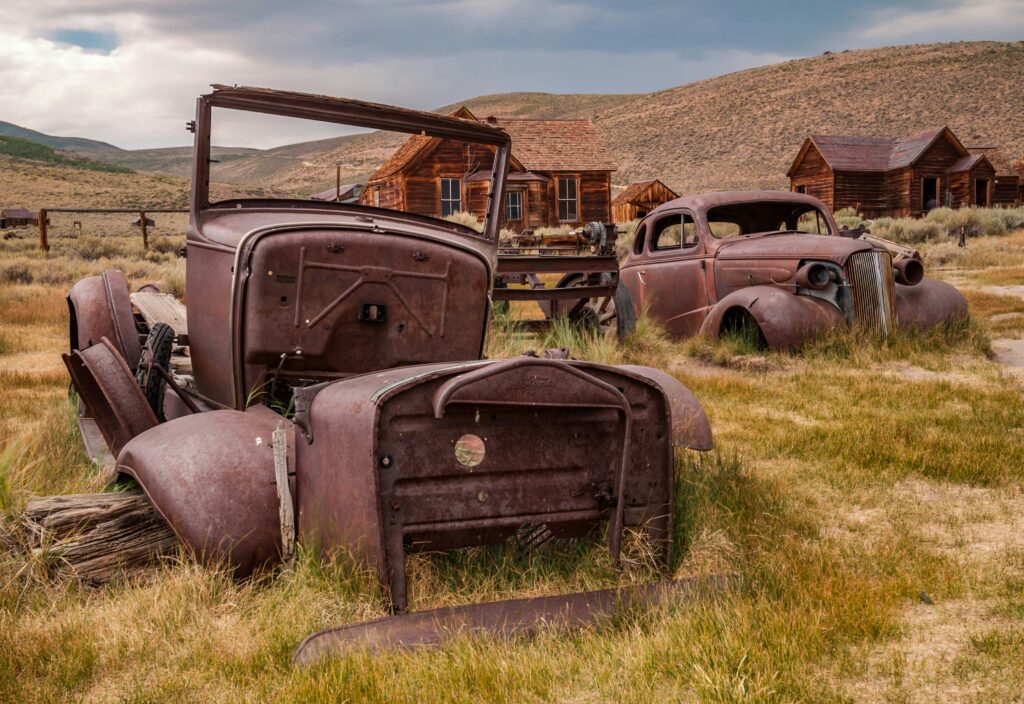
Tourism and Accessibility
California's ghost towns are a popular tourist destination, attracting visitors from all over the world. Whether you are a history buff, an urban explorer, or just looking for a unique adventure, there is something for everyone in these abandoned towns. Here are some of the ways you can explore these ghost towns:
Guided Tours and Hiking Trails
Many of California's ghost towns offer guided tours that provide a wealth of information about the town's history, culture, and architecture. These tours are often led by knowledgeable guides who can answer your questions and provide insights into the town's past. Some tours also include access to areas that are closed off to the general public.
If you prefer to explore on your own, many ghost towns offer hiking trails that allow you to explore the town at your own pace. These trails often lead to abandoned buildings, mines, and other points of interest. Just be sure to bring plenty of water, sunscreen, and a map, as some trails can be quite challenging.
Camping and Amenities
If you want to spend more than a day exploring a ghost town, many of them offer camping facilities and other amenities. Some towns have RV parks, while others have primitive campsites that offer a more rustic experience. Many ghost towns also have picnic areas, restrooms, and other amenities that make it easy to spend the day exploring.
Before you go camping, be sure to check the weather forecast and bring appropriate gear. Some ghost towns can get quite cold at night, so be sure to bring warm clothing and a good sleeping bag. Additionally, some towns may have limited access to food and water, so be sure to bring plenty of supplies with you.
In summary, California's ghost towns offer a unique and fascinating glimpse into the past. Whether you prefer guided tours or hiking trails, camping or amenities, there is something for everyone in these abandoned towns. So pack your bags, grab your camera, and get ready for an adventure you won't soon forget!
Conservation Efforts
California is home to some of the most fascinating ghost towns in the world. These abandoned towns are a testament to the state's rich history and culture. However, preserving these towns is not an easy task. It requires a lot of effort and resources to maintain them in a state of arrested decay.
Arrested Decay and Restoration
Arrested decay is a term used to describe the process of preserving a building or structure in a state of decay. This process involves stabilizing the structure and preventing further deterioration, while still maintaining its original appearance. One of the most famous examples of arrested decay is the ghost town of Bodie, California. The California Department of Parks and Recreation took over Bodie in 1962 and initiated a plan to preserve Bodie in a state of arrested decay. Today, visitors can tour the town and see what life was like in the late 1800s.
Restoration is another method used to preserve ghost towns. Restoration involves repairing and rebuilding structures that have been damaged or destroyed. However, restoration can be expensive and time-consuming. It also runs the risk of destroying the original character of the town. Therefore, restoration is often reserved for structures that are in danger of collapsing or are of significant historical importance.
Environmental Considerations
Preserving ghost towns is not just about maintaining their historical significance. It also involves taking into account the environmental impact of these towns. Many ghost towns were abandoned due to environmental disasters such as mining pollution or natural disasters such as floods and earthquakes. Therefore, it is important to consider the environmental impact of preserving these towns.
In recent years, there have been several environmental lawsuits related to the preservation of ghost towns in California. For example, the Salton Sea has been spewing toxic fumes, creating ghost towns and endangering the health of nearby communities. The Species Conservation Habitat Project, part of California's 10-year plan to address issues at Salton Sea, encompasses about 3,770 acres of exposed lake bed and is aimed at restoring the area to a healthy ecosystem.
Overall, preserving ghost towns in California requires a delicate balance between maintaining their historical significance and considering the environmental impact of their preservation. By using methods such as arrested decay and restoration, we can ensure that these towns continue to tell the story of California's rich history for generations to come.
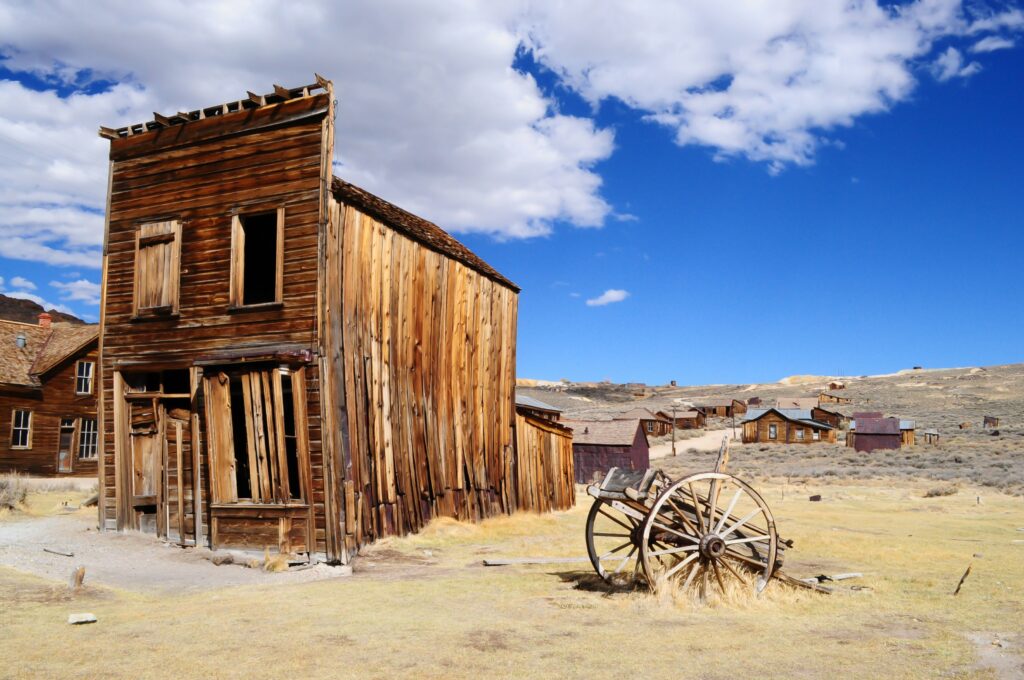
Ghost Towns Today
If you're interested in exploring abandoned buildings and small populations, California has plenty of ghost towns that are worth visiting. Some of these towns have been completely abandoned, while others have been converted into modern communities with small populations. Regardless of their current state, these ghost towns offer a glimpse into California's history and the lives of people who once lived there.
Modern Communities and Small Populations
Some of California's ghost towns have been able to survive by transforming themselves into modern communities with small populations. One such town is Calico, which was once a bustling mining town but is now a popular tourist destination. The town has been restored to its former glory, and visitors can explore the old buildings, take a train ride, or pan for gold.
Another example is Bodie, which was once a thriving gold-mining town but is now a state park with a small population. Visitors can explore the old buildings and learn about the town's history through guided tours and exhibits.
Abandoned Sites and Photography
If you're interested in abandoned sites and photography, California has plenty of ghost towns that have been left to decay. These towns offer a unique opportunity to capture the beauty of decay through photography and explore the ruins of once-thriving communities.
One such town is Cerro Gordo, which was once a prosperous silver-mining town but is now completely abandoned. Visitors can explore the old buildings and take in the stunning views of the surrounding mountains.
Another example is Rhyolite, which was once a bustling mining town but is now a ghost town with many abandoned buildings. Visitors can explore the ruins and take in the surreal landscape, which includes a ghostly sculpture garden.
Overall, California's ghost towns offer a unique opportunity to explore the state's history and experience the beauty of decay. Whether you're interested in modern communities or abandoned sites, there's something for everyone in California's ghost towns.
Activities and Events
Reenactments and Festivals
One of the best ways to experience the Wild West is by attending a reenactment or festival. Many of the ghost towns in California hold annual events that celebrate their history and culture. For example, the Calico Ghost Town in San Bernardino County hosts the Calico Days Festival every October. This festival features live music, gunfight reenactments, and gold panning demonstrations. It's a great opportunity to learn about the town's mining history and experience the Wild West.
Other ghost towns in California also hold similar events throughout the year. These festivals often include activities such as costume contests, parades, and food vendors. They're a great way to immerse yourself in the history and culture of the Wild West.
Exploring the Wild West
If you're interested in exploring the Wild West on your own, there are plenty of activities to choose from. Many ghost towns in California offer guided tours that take you through the town's historic buildings and landmarks. You can also explore on your own and visit saloons, general stores, and other historic sites.
Some ghost towns in California also offer activities such as gold panning, horseback riding, and hiking. These activities allow you to experience the Wild West in a more hands-on way.
When exploring the Wild West, it's important to keep in mind that many of these towns had a red-light district. While these areas were an important part of the town's history, they may not be appropriate for all visitors. Be sure to research the history of the town before visiting and choose activities that align with your interests and values.
Overall, there are plenty of activities and events to experience in California's ghost towns. Whether you attend a festival or explore on your own, you're sure to have a memorable experience.
Legends and Lore
Ghost towns are not only known for their abandoned buildings and structures but also for the legends and lore that surround them. California's ghost towns have their fair share of spooky stories and tales that have been passed down through generations.
One of the most popular legends is that of the Mystery Shack in Masonic. According to the legend, a man named Harry Pye built the shack in the early 1900s. Visitors to the shack would experience strange occurrences such as objects moving on their own and unexplainable noises. Some believe that the shack was built on top of an ancient Native American burial ground, while others think it was cursed by a witch.
Another popular legend is the Curse of the Coyote in Rhyolite. The curse is said to have been placed on the town by a Native American shaman after the town's residents killed a coyote. The curse caused the town's mines to dry up and the town to eventually become abandoned.
The Stamp Mill in Skidoo is said to be haunted by the ghost of a miner who died in a mining accident. Visitors to the mill have reported hearing strange noises and feeling a cold presence.
Drawbridge, a ghost town located in the San Francisco Bay Area, is known for its haunted railroad tracks. Legend has it that a train carrying passengers crashed on the tracks, killing everyone on board. Visitors to the tracks have reported hearing the sounds of a train and seeing ghostly apparitions.
These are just a few of the many legends and lore surrounding California's ghost towns. Whether you believe in the supernatural or not, these stories add to the mystique and intrigue of these abandoned places.
Frequently Asked Questions
What are some notable ghost towns to visit in California?
California is home to numerous ghost towns, each with its own unique history and charm. Some of the most notable ghost towns to visit in California include Bodie State Historic Park, Calico Ghost Town, Cerro Gordo, and Randsburg.
Can you recommend a map that shows ghost town locations in California?
Yes, there are several maps available online that show the locations of ghost towns in California. One such map is the “California Ghost Town Map” by DesertUSA, which provides an interactive map of ghost towns throughout the state.
Are there any ghost towns in California that are currently for sale?
Yes, there are several ghost towns in California that are currently for sale. These include the former mining town of Seneca, which is located in Plumas County, and the town of Amboy, which is situated along Route 66 in San Bernardino County.
What are the most haunted ghost towns in California?
There are several ghost towns in California that are said to be haunted, including Bodie State Historic Park, Calico Ghost Town, and Cerro Gordo. Visitors have reported seeing apparitions, hearing strange noises, and feeling an eerie presence in these haunted ghost towns.
Are there any restricted ghost towns in California that the public can't visit?
Yes, there are a few ghost towns in California that are restricted and off-limits to the public. These include the former military town of China Lake, which is located in the Mojave Desert, and the town of Drawbridge, which is situated in the San Francisco Bay Area.
What makes Calico Ghost Town a popular attraction?
Calico Ghost Town is a popular attraction in California due to its well-preserved buildings, historic artifacts, and family-friendly activities. Visitors can pan for gold, take a train ride, explore the town's museums, and watch live performances at the Calico Saloon.

